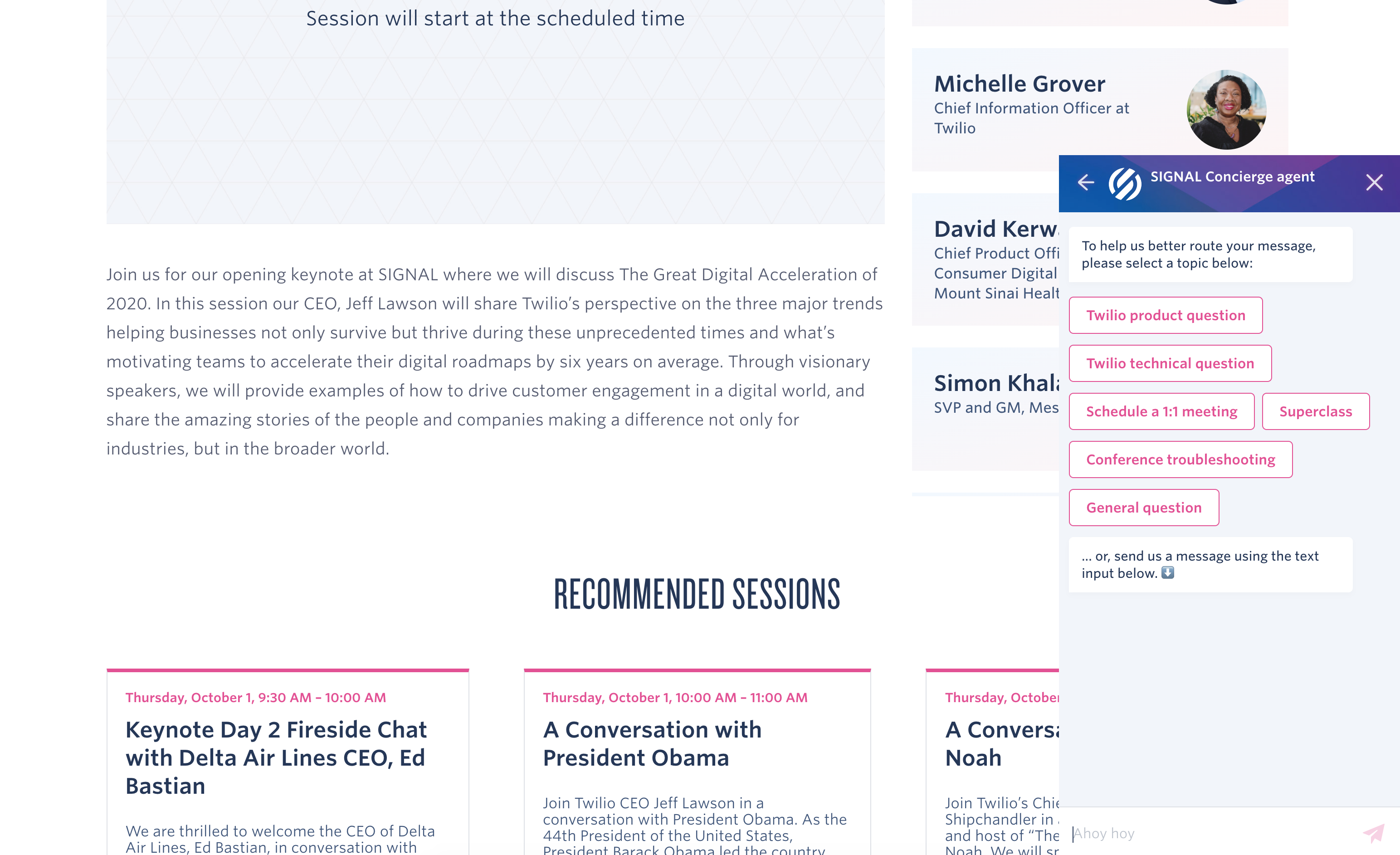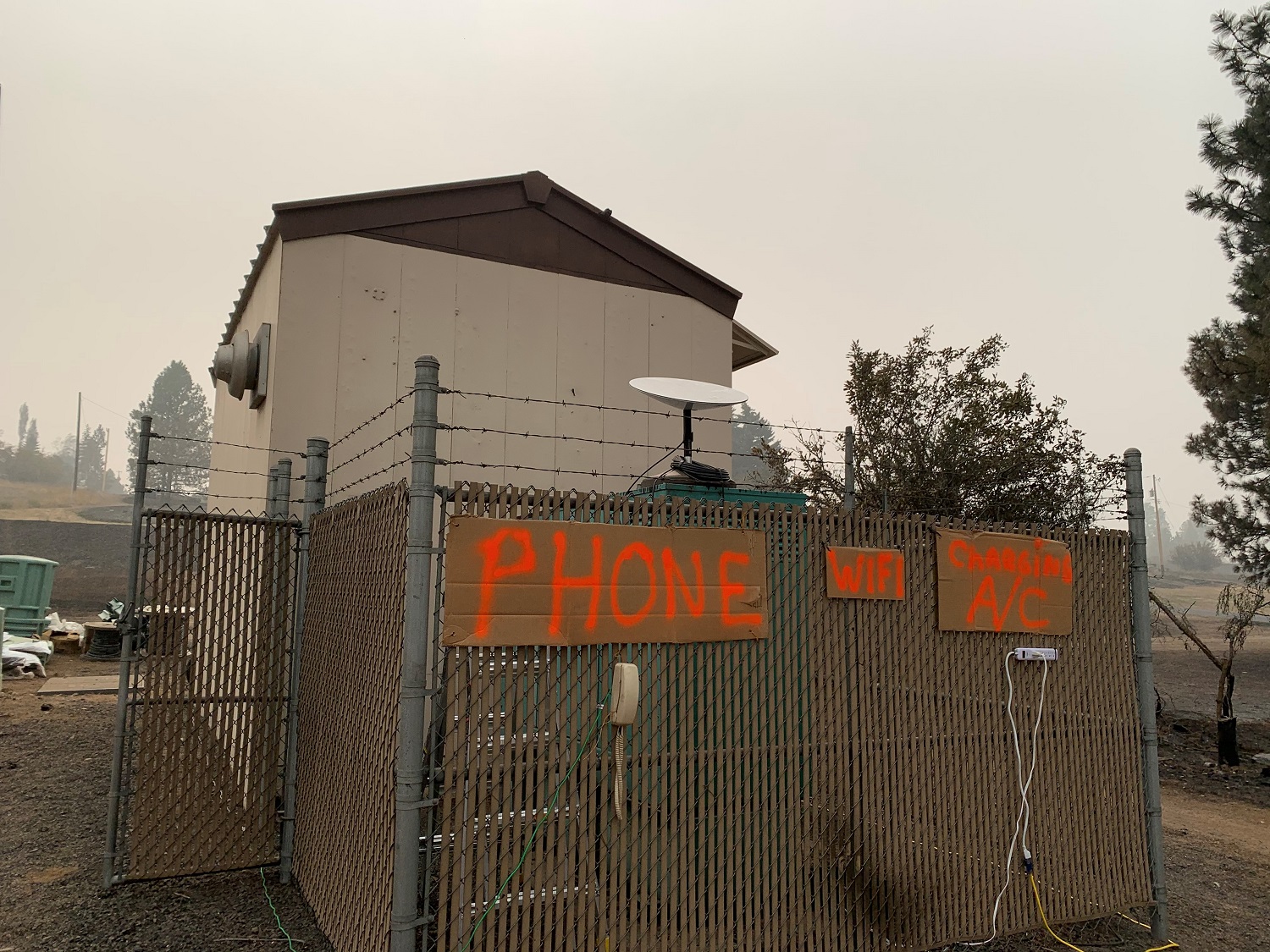Twilio’s annual customer conference was supposed to happen in May, but like everyone else who had live events scheduled for this year, it ran smack-dab into COVID-19 and was forced to cancel. That left the company wondering how to reimagine the event online. It began an RFP process to find a vendor to help, but eventually concluded it could use its own APIs and built a platform on its own.
That’s a pretty bold move, but one of the key issues facing Twilio was how to recreate the in-person experience of the show floor where people could chat with specific API experts. After much internal deliberation, they realized that was what their communication API products were designed to do.
Once they committed to going their own way, they began a long process that involved figuring out must-have features, building consensus in the company, a development and testing cycle and finding third-party partnerships to help them when they ran into the limitations of their own products.
All that work culminates this week when Twilio holds its annual Signal Conference online Wednesday and Thursday. We spoke to In-Young Chang, director of experience at Twilio, to learn how this project came together.
Chang said once the decision was made to go virtual, the biggest issue for them (and for anyone putting on a virtual conference) was how to recreate that human connection that is a natural part of the in-person conference experience.
The company’s first step was to put out a request for proposals with event software vendors. She said that the problem was that these platforms hadn’t been designed for the most part to be fully virtual. At best, they had a hybrid approach where some people attended virtually, but most were there in person.
“We met with a lot of different vendors, vendors that a lot of big tech companies were using, but there were pros to some of them, and then cons to others, and none of them truly fit everything that we needed, which was connecting our customers to product experts [like we do at our in-person conferences],” Chang told TechCrunch.
Even though they had winnowed the proposals down to a manageable few, they weren’t truly satisfied with what the event software vendors were offering, and they came to a realization.
“Either we find a vendor who can do this fully custom in three months time, or [we do it ourselves]. This is what we do. This is in our DNA, so we can make this happen. The hard part became how do you prioritize because once we made the conference fully software-based, the possibilities were endless,” she said.
All of this happened pretty quickly. The team interviewed the vendors in May, and by June made the decision to build it themselves. They began the process of designing the event software they would be using, taking advantage of their own communications capabilities, first and foremost.
The first thing they needed to do was meet with various stakeholders inside the company and figure out the must-have features in their custom platform. She said that reeling in people’s ambitions for version 1.0 of the platform was part of the challenge that they faced trying to pull this together.
“We only had three months. It wasn’t going to be totally perfect. There had to be some prioritization and compromises, but with our APIs we [felt that we] could totally make this happen,” Chang said.
They started meeting with different groups across the company to find out their must-haves. They knew that they wanted to recreate this personal contact experience. Other needs included typical conference activities like being able to collect leads and build agendas and the kinds of things you would expect to do at any conference, whether in-person or virtual.
As the team met with the various constituencies across the company, they began to get a sense of what they needed to build and they created a priorities document, which they reviewed with the Signal leadership team. “There were some hard conversations and some debates, but everyone really had goodwill toward each other knowing that we only had a few months,” she said.

Signal Concierge Agent helps attendees navigate the online conference. Image Credits: Twilio
The team believed it could build a platform that met the company’s needs, but with only 10 developers working on it, they had a huge challenge to get it done in three months.
With one of the major priorities putting customers together with the right Twilio personnel, they decided to put their customer service platform, Twilio Flex, to work on the problem. Flex combines voice, messaging, video and chat in one interface. While the conference wasn’t a pure customer service issue, they believed that they could leverage the platform to direct requests to people with the right expertise and recreate the experience of walking up to the booth and asking questions of a Twilio employee with a particular skill set.
“Twilio Flex has Taskrouter, which allows us to assign agents unique skills-based characteristics like you’re a video expert, so I’m going to tag you as a video expert. If anyone has a question around video, I know that we can route it directly to you,” Chang explained.
They also built a bot companion, called Signal Concierge, that moves through the online experience with each attendee and helps them find what they need, applying their customer service approach to the conference experience.
“Signal Concierge is your conference companion, so that if you ever have a question about what session you should go to next or [you want to talk to an expert], there’s just one place that you have to go to get an answer to your question, and we’ll be there to help you with it,” she said.
The company couldn’t do everything with Twilio’s tools, so it turned to third parties in those cases. “We continued our partnership with Klik, a conference data and badging platform all available via API. And Perficient, a Twilio SI partner we hired to augment the internal team to more quickly implement the custom Twilio Flex experience in the tight timeframe we had. And Plexus, who provided streaming capabilities that we could use in an open source video player,” she said.
They spent September testing what they built, making sure the Signal Concierge was routing requests correctly and all the moving parts were working. They open the virtual doors on Wednesday morning and get to see how well they pulled it off.
Chang says she is proud of what her team pulled off, but recognizes this is a first pass and future versions will have additional features that they didn’t have time to build.
“This is V1 of the platform. It’s not by any means exactly what we want, but we’re really proud of what we were able to accomplish from scoping the content to actually building the platform within three months’ time,” she said.

